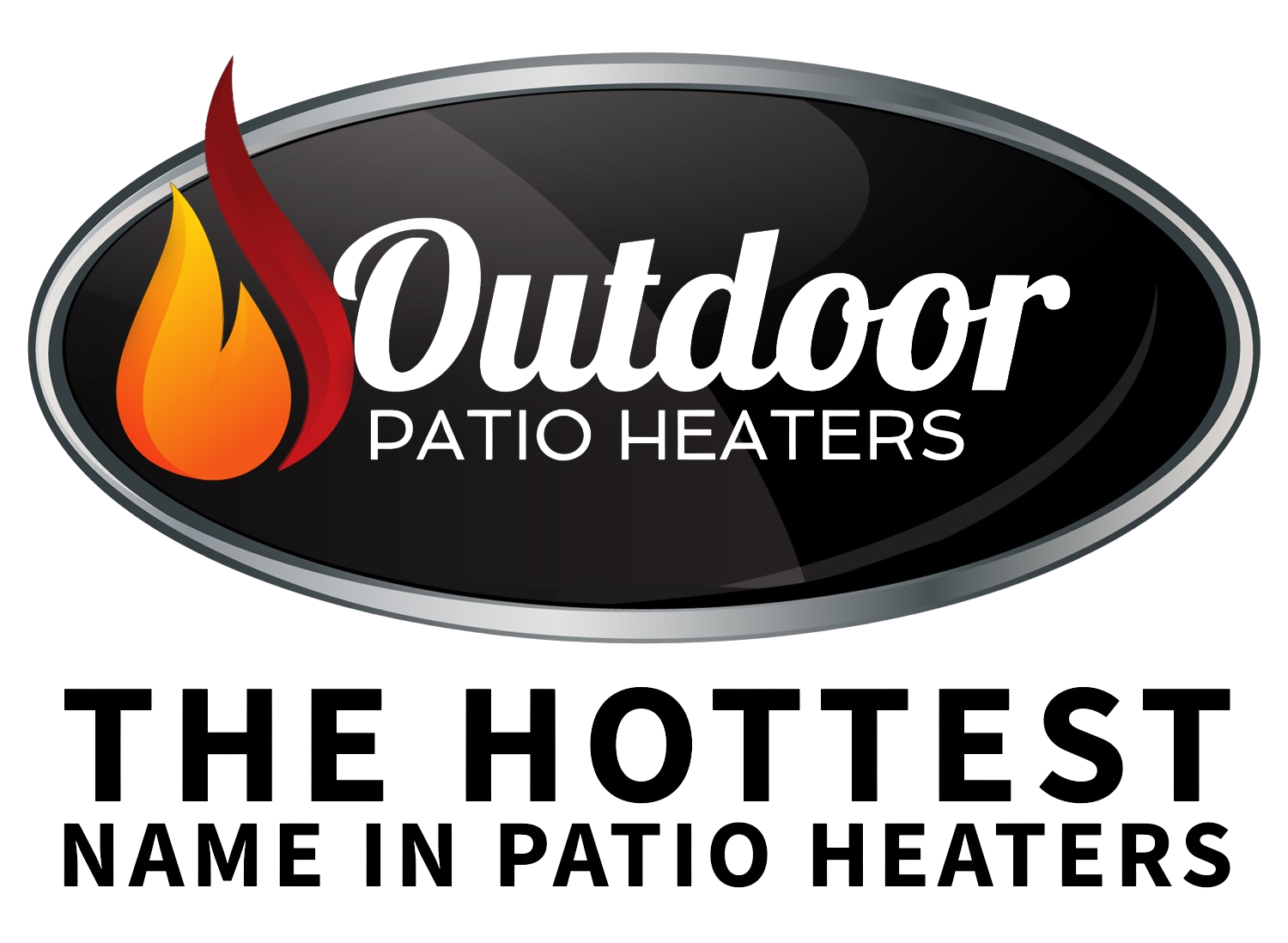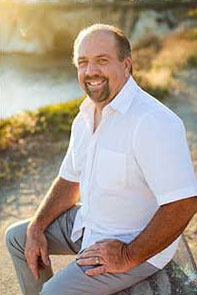
Patio heaters are the only way to provide warmth, and the best way of increasing comfort for outdoor social areas of any size. But there are many variables involved in creating this inviting setting. Both the effectiveness and the cost of heating an outdoor space greatly depend upon the type of heater selected, and the way it’s designed.
Overhead style gas or propane radiant infrared heaters give the best result AND the greatest value. They offer the most area coverage, most heat, most efficient energy usage, and the most economical operating cost available.
To ensure a clear, detailed understanding of these factors, we’ll first outline the various other heating alternatives on the market, and then discuss how overhead units operate.
1) Standing Gas Patio Heaters (mushroom style)
Standing gas patio heaters, as a general rule, have a capacity of 40,000 BTU, stand six or seven feet tall, and have shallow overhead domes that attempt to direct heat downward in a 360 degree radius (often referred to as “mushroom” or “umbrella” heaters). Propane models have a 20 pound gas tank which is enclosed at the base. 40,000 BTU will only effectively radiate heat over a circle about 8 to 10 feet in diameter, with the greatest amount of heat directly underneath within approximately 3 to 4 feet of the heater. A significant amount of heat is lost at the outer edges, resulting in only marginal heat effectiveness at the perimeter.
Drawbacks: These heaters take up a large amount of space, may not be aesthetically pleasing, require substantial clearance from combustible materials, may need to be frequently replaced, and will leave cold spots in large areas. Standing gas heaters have less coverage per BTU capacity than other forms of patio heaters. Some cities have banned the use of propane models due to safety concerns.
2) Table Patio Heaters
The most portable and least expensive table heaters are propane table heaters. Typically using small one or two pound gas cylinders, some units may offer a connection to larger, refillable cylinders. Maximum heat is typically 9,000 to 11,000 BTU that is equal in heat output to a 1500 watt electric heater. The dome reflector radiates heat within a 4 to 5 foot diameter.
Drawbacks: Very limited coverage due to their small size, the overall long-term reliability of the unit, and poor safety. Not effective in cold weather.
3) Electric Patio Heaters
Electric patio heaters produce heat very quickly, and are relatively easy to install.
Drawbacks: The illumination of the heated area from the light produced by an electric heater, in addition to high operating costs, and heat output limitations, means that electric patio heaters tend to be limited in terms of use options. The cost of operation can be almost prohibitively expensive in certain areas of the country.
4) Fire Pits
Fire pits and outdoor fireplaces are aesthetically pleasing and provide a focal point for guests to gather near. However heating capability is limited if they are being depended upon to warm up a crowd on a cold night, they are difficult to regulate, and create safety hazards. There are three basic types of fire pits:
a)Circular fire pits radiate minimal heat in all directions. Most have legs and a fire screen. Flame and smoke is vulnerable to wind and may be blown back on people, decks, and homes.
b)Chimineas are shaped like pot-bellied stoves, and a short chimney helps divert smoke away from people. A small opening directs heat in just one direction. It does not have the same visual impact that an open flame fire does.
c)Outdoor fireplaces usually have a chimney, but the term is often used to describe any fire pit with legs, and some may even look like an indoor fireplace.
Drawbacks: All outdoor fire pits are primarily used to set a “mood” rather than for practical heating purposes since greatest coverage is typically less than ten feet. Fire pits are not designed for use on wooden decks and should only be used on masonry surfaces.
5) OVERHEAD RADIANT INFRARED GAS PATIO HEATERS
These heaters use infrared energy to heat the objects beneath them, and the heat is evenly generated and spread uniformly over every surface within their range. Gas or propane powered units have high BTU output and quality reflectors that direct the heat waves over a large area with very little loss compared to mushroom heaters, (therefore generating more heat for less fuel). These heaters are usually suspended overhead, or mounted to a wall or ceiling, taking up zero floor space. Some models do not produce any visible light as they emit pure heat, efficiently converting natural gas or propane fuel to infrared heat only. One such unit is made by Calcana and has the following features:
- Easy to operate, just flick a switch
- No pilot lights!
- Variable heat settings (Patent Pending)
- Low clearance to combustible requirements
- Sleek, architectural design
- Various lengths and configurations available
- Available in natural gas or propane Inputs from 40,000 to 75,000 BTUs/Hr Heavy-duty construction
- 3-Try Direct Spark Ignition system, with 100% safety shut off Heavy duty, 8-sided aluminum or stainless steel reflector Virtually maintenance free
- Certified to –40F weather conditions Wind/weather proof enclosed burner chamber Effective in snow/ice melt applications
- CSA Safety certified for both residential and commercial applications.
The Calcana infrared patio heater is a great choice because it is one of the very few manufactured heaters in the USA, has a clean-lined, unobtrusive design, and directional high heat output. It is a permanently installed heater which can connect to large capacity refillable gas cylinders, or connect directly into a natural gas distribution system. Their exclusive, remote control panel may be put anywhere, within easy reach. The heat control is amazingly fine and accurate, compared to other units that only have basic settings. The overall craftsmanship and quality of the design is very impressive.
With a better understanding of the operation and features of the various types of patio heaters, you’ll be able to make a smarter purchasing decision, based on your needs and expectations.

